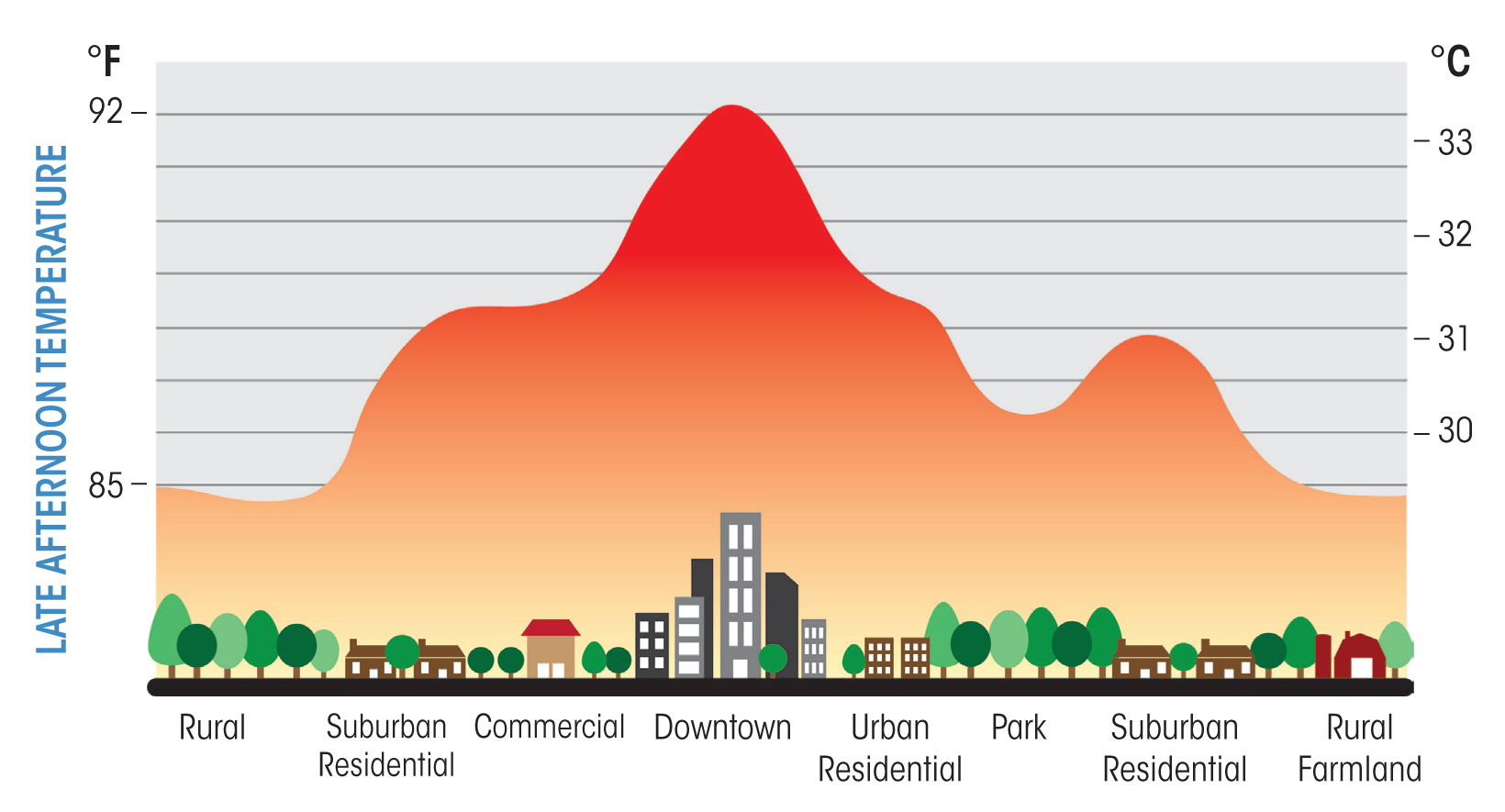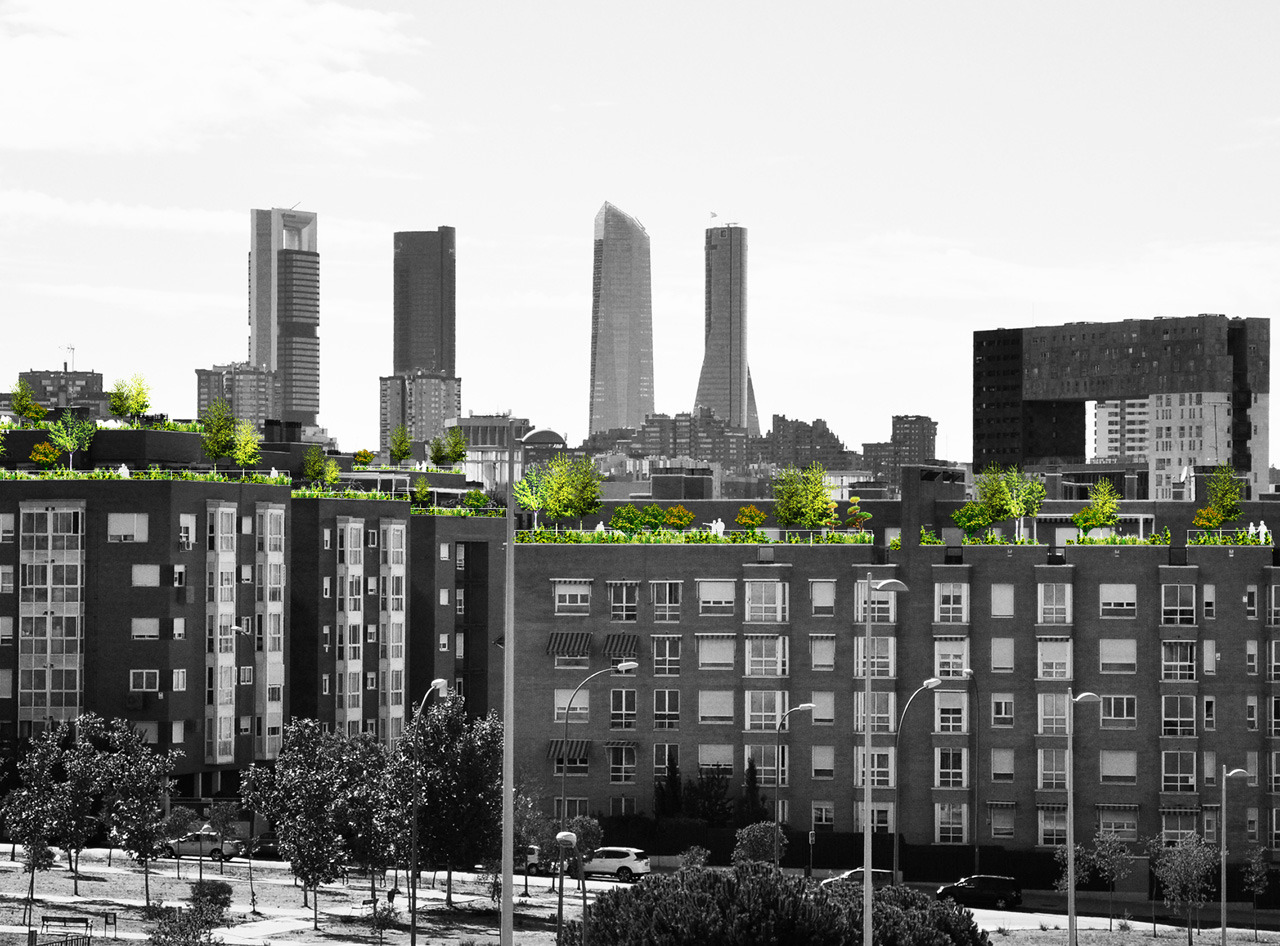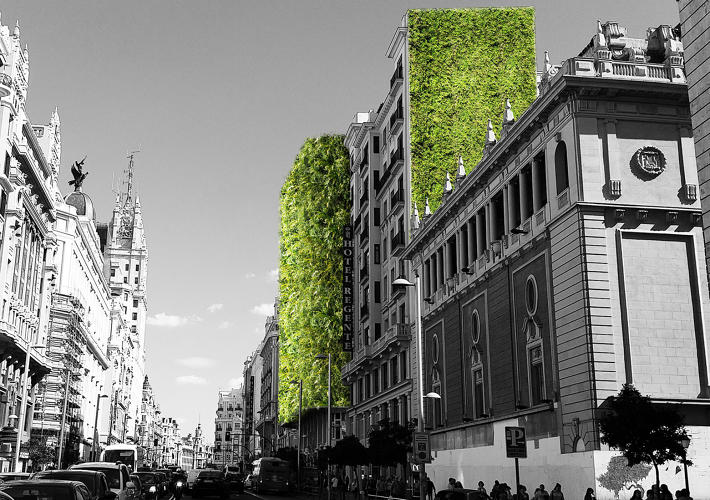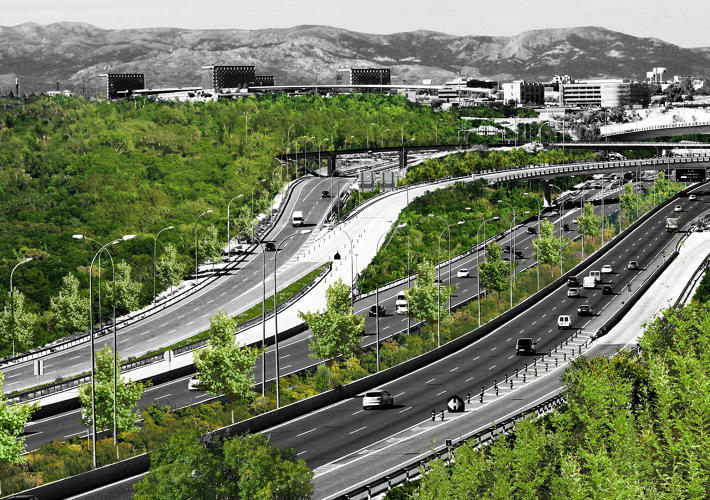Can you cut 1 Tonne of carbon pollution out of your life?
Take the challengeOur cities are making temperatures rise, but planting green spaces can fix it – while making us happier at the same time.
If you've been in Sydney at all this summer you're bound to be well acquainted with the term 'heat wave'. If you're at all like me, you'll be avoiding the city at all costs in this weather – the sun's glare has a knack for reflecting off all the shiny buildings and straight into your eyeball, air-conditioning on public transport never seems to work properly, and it always feels about 20 degrees hotter on the streets of the CBD.
But perhaps your internal thermometer isn't lying to you. Studies show that city centres are in fact far hotter than their surrounding suburbs and parklands, and it's all to do with plants – or rather, the lack thereof.
Ever walked past a cement wall and felt the intense heat radiating off it like someone's just stuck the whole building in an oven? Or walked across a bitumen road barefoot and almost burnt the soles of your feet right off? Imagine this, but on a whole city scale. This is the concept underpinning the environmental phenomenon 'urban heat islands'.
An urban heat island is a city or metropolitan area that is significantly warmer than its surrounding rural areas due to human activities. They occur when natural surfaces such as vegetation and soil are replaced by built surfaces, which release radiation as heat instead of absorbing it and releasing radiation as water vapour. This increases the overall temperature of that area.

Image source: UHI
The graph above depicts the average afternoon temperatures across a city and its surrounding areas. It shows that our cities are, in fact, fast tracking the already increasing temperatures that come with climate change. As the population grows, urbanisation continues, and the urban heat island tends to expand its area and increase the average temperature. The urban heat islands also contribute to a decreased air and water quality, which has detrimental flow-on effects to the existing ecosystems.
However, the graph also illustrates the lower temperatures that are experienced in areas with high levels of plant life and vegetation, and here lies our beacon of hope; planting more trees. Creating more green spaces and increasing the overall amount of vegetation in cities may reduce the rising temperatures that are currently experienced.
Cities around the world have already begun to realise the detrimental impact urban heat islands are having on the climate resilience of their cities, and some have started to implement large-scale 'planting projects' to help adapt to the challenges brought on by climate change.
Madrid is spending millions to expand parks, create rooftop gardens, cover building walls in plants, turn vacant lots into green spaces and filling redundant roads with trees. All of this helps to insulate buildings (and help save energy), reduce street noise, and bring down local temperatures by shading pavement and releasing evaporated water (encouraging rainfall) instead of heat. A number of neighbourhoods in Madrid ran pilot green roof tests and found that temperatures went down more than four degrees.

Madrid's plans for turning unused spaces, rooftops and building facades into green spaces. Source: Co.Exist
Not only would a city bristling with greenery aid in our temperature-dropping endeavour but according to the latest study published in Nature, living around trees can make you happier. The study shows that having ten extra trees on a block improved how people reported their health and happiness. In fact, people living around 10 extra trees were as happy and healthy as people who made $10,000 more per year, or those who were 7 years younger.
"According to our findings improving health perception and decreasing cardio-metabolic conditions by planting 10 more trees per city block is equivalent to increasing the income of every household in that city block by more than $US10,000, which is more costly than planting the additional 10 trees."- – Authors of the study.
So, weather it's to help you brave the city on a hot summer's day, or purely to make you feel happier, planting gardens in urban spaces is something we should all do more of.


Is your city too hot to handle in summer? Have you started your own green spaces? Let us know in the comments below!
Read this next:
Climate change and happiness: the link to our taste buds
The Ethical City: an Idea Whose Time Has Come
1 Million Women is more than our name, it's our goal! We're building a movement of strong, inspirational women acting on climate change by leading low-carbon lives. To make sure that our message has an impact, we need more women adding their voice. We need to be louder. Joining us online means your voice and actions can be counted. We need you. We're building a movement of women fighting climate change through the way we live.

